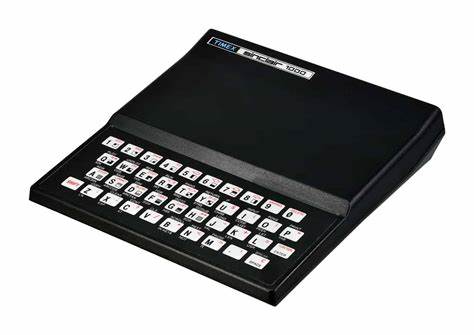As we continue the “15 Quick Bits About…” series, we take a look at a vintage computer that I saw advertised a LOT (for $99 USD!) in various electronics magazines when I was a kid. However, it wasn’t until many years later that my dad gave me one that he had picked up for $5 at a thrift store – still in the original box. What piece of computing history might I be talking about? I’m talking about the Timex Sinclair 1000. In this post, we’ll take a look at 15 facts about the Time Sinclair 1000. Let’s take a look…

While I would not want to spend a lot of time working on the this computer today, there’s little doubt it had a huge impact on the lives of many budding computer programmers in the 1980’s. The low price (in relative terms at the time) of this computer allowed more people to experiment with BASIC programming than would have otherwise been possible. Nearly 42 years after it’s launch in the United States, I still enjoy having this small piece of history in my vintage computer collection.
Something to keep in mind is that most (if not all) of the design decisions made for the Timex Sinclair 1000 revolved around the basic premise of delivering a computer as cheaply as possible. You can see this reflected in the quick bits outlined below.
Quick Bits on the Timex Sinclair 1000
- The Timex Sinclair 1000, based on the Sinclair ZX-81, was launched in July 1982 with a U.S. sales price of $99.95 (USD), selling 500,000 units within the first six months. [1] [2]
- Targeted at the first-time computer customer and the educational market, the Timex Sinclair 1000 was advertised as “the first computer under $100” (USD). [1] [3]
- In July 1982, Timex Computer begins selling the Timex Sinclair 1000 through over 1000 Timex retail outlets. [2]
- The Timex Sinclair 1000 was released with 2KB of RAM; However, you could purchase a 16KB memory expansion cartridge for $200 (USD). Twice the cost of the 1000’s purchase price! [3]
- The Timex Sinclair 1000 could display 32 characters (across) by 22 characters (down) for a total of 704 characters per screen. [2] [4]
- The Timex Sinclair 1000 supported 64 x 44 pixels in semigraphics mode. Each character position is essentially split into 4 pixels. [1] [4]
- The Timex Sinclair 1000 was designed and shipped without a power switch. To turn the unit on or off, you simply plugged it in or unplugged it, respectively. [5]
- The Timex Sinclair 1000 is relatively slow, primarily due to only running programs during the vertical blanking interval and the horizontal sync as the screen refreshes. The rest of the time is used to render the video image. [7]
- Of the 24 lines that the Timex Sinclair could display (in black and white), 22 of those lines were for general display while the remaining (bottom) two were reserved for data entry and error display. [6]
- Commodore announced a trade-in program offering $100 for any competing computer. The Timex Sinclair 1000 was selling for $49 (USD) by this time; Many were purchased just to trade them in for a Commodore 64! [6]
- The Timex Sinclair 1000 consists of a single motherboard with a grand total of four integrated circuit (IC) chips, primarily due to a custom “Master” chip which combined and replaced many other ICs. [2] [7]
- When typing on the Timex Sinclair 1000, the screen will “blank” with each character you type. This is because the CPU can either write to the screen or run code, but not generally at the same time. [7]
- With SLOW mode, the Timex Sinclair 1000 can execute code while simultaneously updating the video output, spending only about 30% of its CPU time running code. [7]
- Due to the limited RAM in the Timex Sinclair 1000, the number of lines that can be displayed on the monitor will decrease as you consume RAM with BASIC commands. [7]
- The audio out, microphone, and 9V power input all use the same 1/8″ phono connector. If you’re not paying attention, you can plug the power supply into the audio out or microphone jack!
References
- Timex Sinclair 1000. Wikipedia. Retrieved 20 Feb 2024.
- Timex Sinclair 1000. oldcomputers.net. Retrieved 20 Feb 2024.
- 1982: Timex Sinclair Computer for $99.95 is Introduced. CED Magic. Retrieved 20 Feb 2024.
- Vickers, S.. (1982). Timex Sinclair 1000 User Manual. Timex Corporation. Pg. 63.
- Power Supplies and Related Hardware. Timex Sinclair. Retrieved 5 Apr 2024.
- Timex Sinclair 1000. Centre for Computing History. Retrieved 28 Apr 2024.
- Documentary – The Sinclair ZX80, ZX81, and Timex Sinclair 1000. The 8-Bit Guy. YouTube. 25 Jan 2019.
Other Quick Bits
This is one in a series of Quick Bits. Visit the Quick Bits page to see Quick Bits on other vintage computing devices. If you prefer seeing this type of information in video format, be sure to check out the Bits && Bytes YouTube channel.
